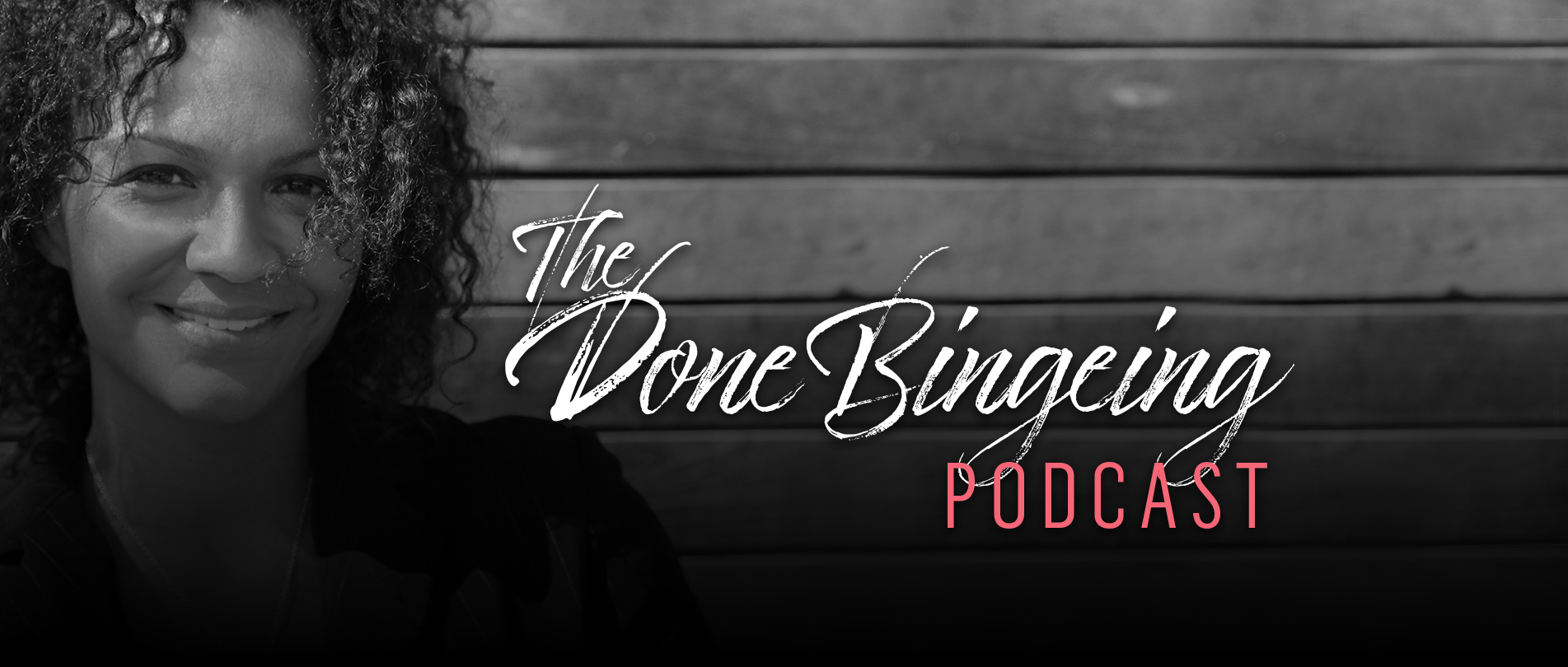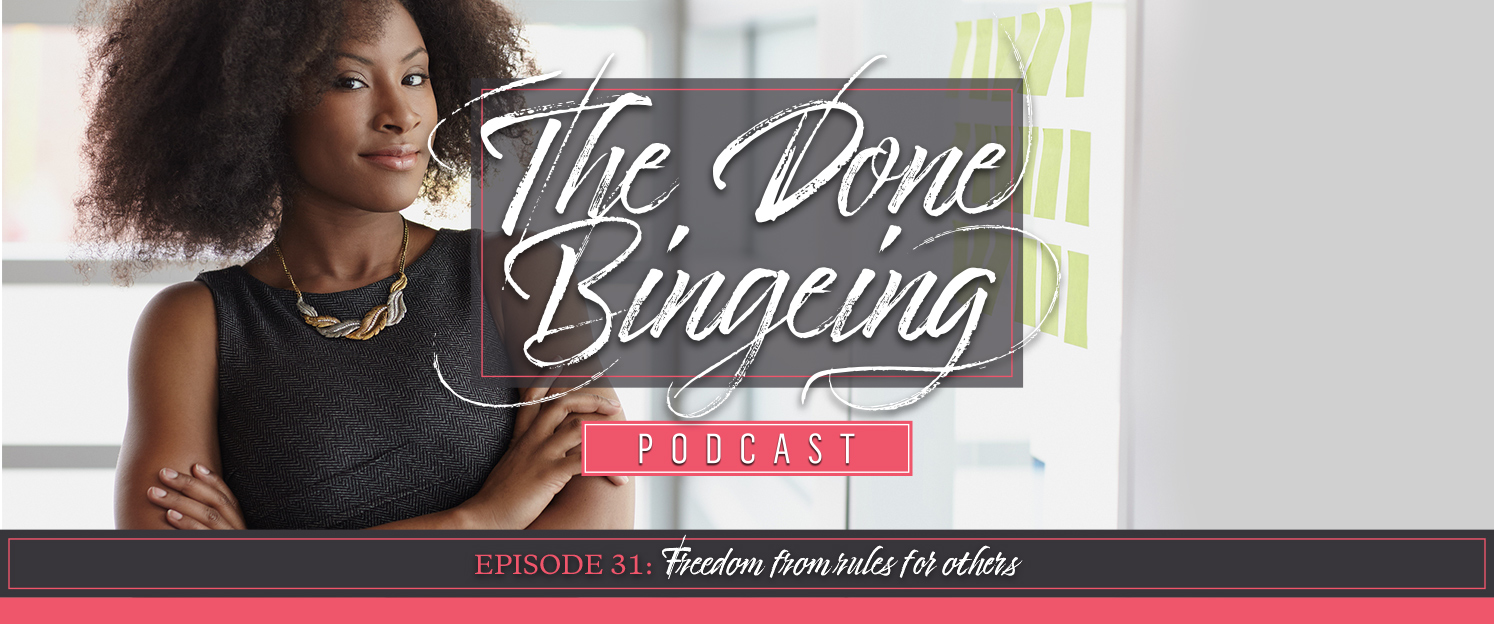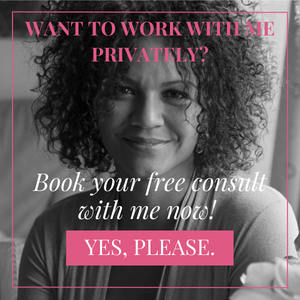
EP #31: Freedom from rules for others

We’ve spent the last two episodes exploring the drawbacks to having rules for others around your eating, your food, and your weight. It was worth it to take the time to understand how having manuals for others holds us back because on the surface they seem like a pretty good idea. So, now that we’re clear that manuals are more trouble than they’re worth, how do you get out of the habit of writing them at all? Listen in for the 10 steps you need to take to let go of your manuals and find more freedom than you ever expected!
Get full show notes and more information here: https://www.holdingthespace.co/31
Episode: Play in new window
Subscribe: iTunes | Google Play | Stitcher | RSS
- Ten step to follow to let go of the rulebooks you have for how others should behave.
- What letting go of manuals doesn’t mean.
- What you make other people’s behavior mean about you.
- What other people’s behavior is really about.
- What you do and don’t have control over.
- Why we have so much more power over our own emotions and actions when we think deliberately.
- Why genuinely listening to another person’s perspective can change everything.
- How to make a request of someone having a manual for them.
- The up-side of letting people be who they are.
What do a jagged cliff face and a smooth pebbled beach have to do with having rules for others? Keep listening!
Welcome to The Done Bingeing Podcast. This is the place to hear about how you can pair the emerging brain science about why you binge with powerful life coaching to help you stop. If you want to explore a non-clinical approach to end binge eating, you’re in the right place. It’s time to free yourself. You have more power than you know. And now, your host, Life and Weight-Loss Coach Martha Ayim.
Welcome to Episode 31 of The Done Bingeing Podcast.
We’ve spent the last two episodes exploring the drawbacks to having rules for others around your eating, your food, and your weight. It was worth it to take the time to understand how having manuals for others holds us back, because on the surface they seem like a pretty good idea.
So, now that we’re clear that manuals are more trouble then than they’re worth, how do you get out of the habit of writing them at all?
Well, first, you acknowledge that you have manuals. Wait! You’ve already done that step. Yay you!
Second, you recognize that those manuals aren’t working for you. Hang on! I think you’ve done that too!
Third, get clear on what it is that you want someone to do differently than what they’re doing right now. So, for example, maybe you want your partner to eat the way you want to eat.
Fourth, ask yourself what meaning it would hold for you if the person did do what you wanted them to do. In other words, if they behaved differently, what would you make it mean?
Let’s suppose your partner decides to ditch Hungry Man dinners every night for organic, tri-color quinoa with lentils and spinach. Maybe you’d make that mean that he loves you so much he’d be willing to go from omnivore to vegan in a heartbeat.
Our brains are so interesting. I have an amazing client whose husband actually did begin to eat the way she did. Guess what she made that mean. She made it mean that she was getting an easy ride, that she might only have success because she was dependent on his participation, that this was a sign that she wasn’t able to stand on her own. Now that’s a lot of loaded meaning, and it had left her feeling pretty scared.
Now, what my client had made her husband’s actions mean was so human. She’s human, like you and me. And she has a human brain, like you and I do.
Do you see how important it is to supervise our brains? Oh my goodness! We’ve got to make sure someone’s in charge up there! And for your brain, that someone is you!
Fifth, ask yourself, how you would feel after you’d interpreted the person’s changed behavior in the way that you did. Now, if you thought your partner would drop a sizzling blue-rare steak for marinated tempeh with chick peas because of his undying love for you, you’re probably starting to feel a little sizzle yourself. I get it.
Now, I hate to douse that fire you’ve got burnin’ but I have to remind you what we talked about last week. We often assume that when someone follows our rules that they love us, and then we get to feel really good—sometimes really, really, really good.
But what we might be missing is the eye rolls when they turn their back.
They might be following our rules because they’re sick and tired of our moods, of our attempts to manipulate them, or of the silent treatment they have to endure if they don’t acquiesce. They might not be feelin’ the love. They might be feelin’ pissed and perhaps be feeling more disconnected from us than ever before.
This might sound like very bad news. But don’t panic because I want you to remember something else that we’ve talked about before. We have so much more power over our own emotions and actions, when we think deliberately.
Step 6 builds on step 5. So, someone’s agreed to follow your rules and you make that mean something that makes you feel really good.
Judging from how hot it was gettin’ in here, it’s pretty clear that you think you’d be feeling those lovin’ feelings if your beloved would eat the way you want them to eat. And those feelings are probably coming from a thought like, “He loves me!”
What I want you to ask yourself is: Do you have that thought available to you now? In other words, can you think that your mate loves you without them having to do what you want them to do?
If your answer is yes, you’ve just hit the jackpot. You get to feel the embers burning, regardless.
You don’t have to change other people to feel better. You can feel better by taking care of your own emotional life and making sure your brain is thinking thoughts that serve you.
Alright, now we’re on to step number 7: Identify what you’re making the person’s current behavior mean and how that interpretation makes you feel. So, for example, suppose hubby sits down beside you on the couch with a family-sized bag of Ruffles, all dressed. He opens the bag with that unmistakable squeak, then reaches in for a handful, shoves it in his mouth, and crunches away. You can hear it. You can smell it. You can pretty-much taste it.
Now, before doing work on your manuals, you may have had an unquestioned thought like, “What a jerk. He doesn’t even care about me. He knows I’m trying to lose weight. I could get diabetes if I don’t stop. Maybe I’ll even die if I don’t figure this out in time. In fact, come to think of it, I’m not feeling so hot right now. Why on earth did I marry this guy?”
I hope you can see that you’ve made hubby’s behavior mean something about you. And this is making you feel pretty rotten. When you feel pretty rotten, my guess is you’ll be inclined to reach for Ruffles.
Now, with all the work you’ve already done on manuals, you’re ready for step 8: Ask yourself if there’s another way you might interpret the person’s behavior that doesn’t mean anything about you.
So, dude’s still crunching chips on the couch. You might opt to make that mean something like this, “Well, it’s certainly more challenging not to eat chips I’m not hungry for when someone’s digging in right here in front of me. But my work is to unlearn the desire for food that truly doesn’t feel good in my body, regardless of whether it tastes good in the moment. This is a signal that I need to work more on unlearning that desire, and I’m committed to doing that.”
A meaning along these lines might not get you feeling exuberant, but it’ll probably leave you feeling calmer, focused, and resolved.
With emotions like those, perhaps you’ll choose to use this opportunity to simply observe and allow any urges to eat chips you’re not hungry for. Remember, every time you experience an urge without reacting with mindless eating or bingeing, you’re strengthening a new neural network in your brain toward a kind of eating that you really do want.
What you’ve done here is to start taking more responsibility for your own emotions and actions. If it’s really important to you that something be done (like learning not to eat when you’re not hungry) then be willing to figure out what you need to do to get it done.
This, my friend, is power, and it’s a power that resides within you. You get to feel better and act in ways that feel right for you, and so do the people around you.
Now, a word of caution here: Taking responsibility for how you feel and what you do, regardless of other people’s behavior, doesn’t mean you stay in relationships that are harmful or not serving you well. But while it’s sometimes necessary to set boundaries with other people, trying to control them never works. There’s a difference, and we’ll be talking about that in the next episode.
Step number 9 is about learning how to make requests of others without having a manual for them. For example, you could say, “Hey, Johnny, I’d love it if you’d be open to waiting to eat chips until after we’ve spent an hour together on the couch. I’m trying not to each chips when I’m not hungry and, right now, this is hard for me to do. But I want to spend time with you snuggling after dinner.”
Now, here’s the trick.
You need to remember that whether or not someone decides to honor your request has nothing to do with you. It has everything to do with them. And I don’t mean this in a snarky, judgmental way. What I’m saying is that a person’s actions (for example, saying no to a request) comes from their own thoughts and their own emotions, just like your actions precipitate from your own thoughts and your own emotions.
Bearing this in mind, decide how you want to feel if someone says no to you. You can decide that you want to feel okay about it. In other words, you’d be letting it be okay for someone to say no—now that’s flipping the manual on its head, isn’t it?
Why would you want to do a thing like that? Why would you want to make a request with no strings attached? Because then you don’t risk using those strings to tie your emotional life what someone else does or doesn’t do. When you tie your emotional landscape to whether or not a person follows your request, you’re back in trouble again.
How come? Because once again you’re depending on them to behave in a certain way so you can feel a certain way. Stuck in this paradigm, you’re back to manipulating them and to spiraling into the emotional negativity that’s a defining hallmark of the manual. And . . . your emotional landscape may start looking like a dodgy, jagged cliff face.
Now, I get that you might not want to feel effervescent if your guy says no to your request for an hour of cuddle and connect time before chip and dip time. But if being willing to feel okay about it sounds way better than feeling rotten about it, the next question is this: What would you need to believe to feel okay about his saying no?
Maybe you’d need to believe that you’re happy to be in a relationship where your partner and you can both be honest about what you want and don’t want to do.
Maybe you’d need to believe that it’s way better that he does what he wants now than that he does what he doesn’t want now and resentment builds up that’s bound to come out later.
Whatever you decide, when you make an effort to find an authentic belief for you that leads to a feeling you can live with, you’ve just taken another step toward being responsible for your own emotions and actions. And your emotional landscape . . . is starting to smooth out like a warm, golden, sandy beach.
Now, does all of this mean that you can never ask a question like, “Hey, are our values in close enough alignment here?” No. It doesn’t mean that at all. You can ask that question. But what I want you to notice is that that’s a very different question than, “How can I get him to do what I want?”
A question like “How can I make him to do what I want?” is coming from a place of disempowerment. A question like “Are our values in close enough alignment for me?” is more likely coming from a place of empowerment. Do you see the difference?
You get to decide how you’re going to respond and what feels right for you in your life. But you want to make decisions like those based on what you control over. And one thing we know for sure is that you don’t have control over other people.
You can take this step even further and genuinely hear someone out on why they’ve made the decision they have. If you were truly open to this, hubby might say, “Listen, I admire what you’re doing, but I’m not there yet. I’m still stressed after a long day at the office and right now, this is the best way I know to wind down. But you’re inspiring me and I’m grateful you’re giving me my space to chill in the way I want to.”
Understanding something from another person’s perspective, may help you realize that their choices really don’t have a thing to do with you. It’s not like your guy doesn’t want to spend time with you, he just wants to de-stress and hasn’t yet learned another way. That knowledge might change everything for you.
By now, you’ve already leaned into step number 10: let people be who they are. If your guy wants to eat the chips, he eats the chips. No rules. You can still choose to love him and enjoy his company.
Letting people be who they are sets you up to have more enjoyable, longer-lasting, conflict-free relationships. And it’s so freeing. Why? Because when everyone stays responsible for their own feelings, they can meet in the middle—unencumbered by mountains of manuals—and have some fun.
When you don’t make someone’s actions mean something negative, you’ll feel a lot calmer and do more of the things that you really want to do.
I want you to see if you notice a difference in how people behave around you when you’re leading from a place of internal calm, not trying to lead from a place of external control—in other words, when you focus on standing in your own power.
And then I want you to imagine what your life would be like if you stayed there.
You can spend your days trying to control the world beyond your circle of power.
Or you can live your life staying within it.
One is about entitlement.
One is not.
One will be effective.
One will not.
Entitlement is as sturdy as a house of cards. If one of them falls out line, it all comes tumbling down.
Effectiveness, even if it seems slow in coming, will build a structure strong enough to last. And that will be worth the effort of every block you used to build it yourself.
That’s it for Episode 31. Thank you for listening. The new year is almost here. How many times has December 31st been the last day you’d ever binge, and January 1st been the day you’d stop? You had a diet and promise ready. But what if you made a different promise to yourself this year. What if you didn’t opt for the same-old? What if you chose to focus on taking your eating and your life to another level entirely? If you’re ready to take the next step in your journey to end your struggle with bingeing or overeating, you’re going to want to check out my new group coaching program. This is going to be a space where we will study and apply the concepts in The Done Bingeing Podcast together. Stay tuned for more details next week!
Thanks for listening to The Done Bingeing Podcast. Martha is a certified life and weight loss coach who’s available to help you stop bingeing. Book a free session with her at www.holdingthespace.co/book. And stay tuned for next week’s episode on freeing yourself from binge eating and creating the life you want.
- Never miss an episode by subscribing via iTunes, Stitcher, Google Play, or RSS.
- Leave a rating and review in iTunes.
- Have a question or topic you’d like to see covered on the podcast? Send it on over to support@holdingthespace.co.
- If you found this episode valuable, it would mean so much to me if you would please share it with your friends.
Now that we’re clear that manuals are more trouble then than they’re worth, it’s time to work on letting them go.
In the comments below, please tell me:
- What it is that you want someone to do differently than what they’re doing right now?
- If the person did what you wanted them to do, what would you make that mean? In other words, what meaning would you ascribe to the fact that they changed their behavior for you? What do you believe or think about what they did? (For example, you might think, “He put the chips away because he loves me.”)
- How would that belief make you feel?
- Is there any way you could have the same belief even if the person didn’t do what you asked them to do?
- Identify what you’re making the person’s current behavior (before they’d changed anything for you) mean and how that interpretation makes you feel.
- Is there any other way you might interpret the person’s behavior that doesn’t mean anything about you?
- How might you make a request of someone with no strings attached? In other words, while still letting it be okay for them to say no?
- What would you need to believe in order to feel okay about someone saying no to one of your requests?
- How might you be able to genuinely stay open to another person’s perspective on why they don’t want to change their behavior for you?
Thank you so much for sharing your thoughts with me.
Sending much love to you!






















0 Comments